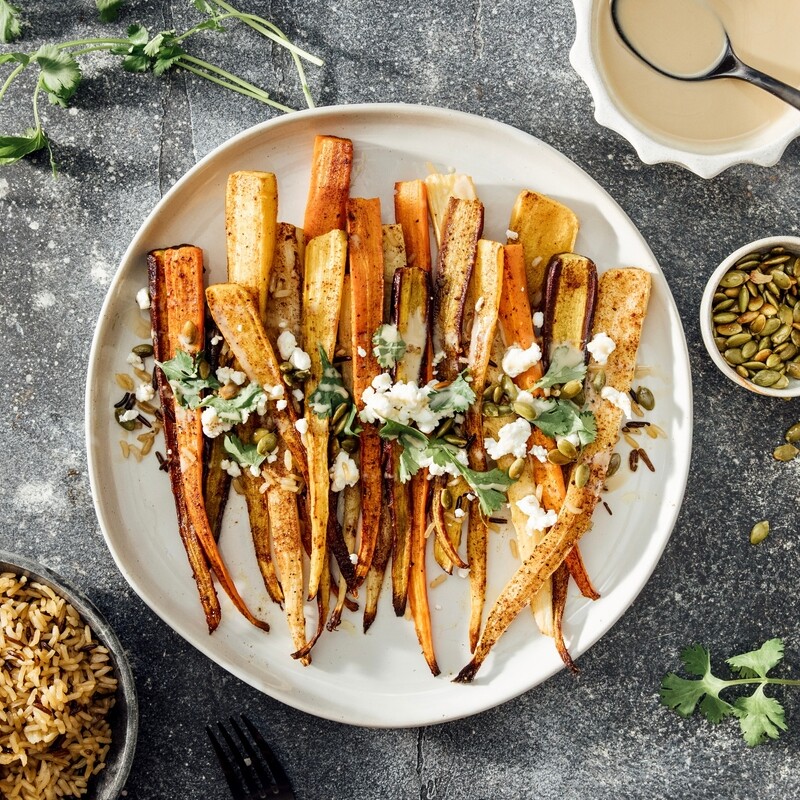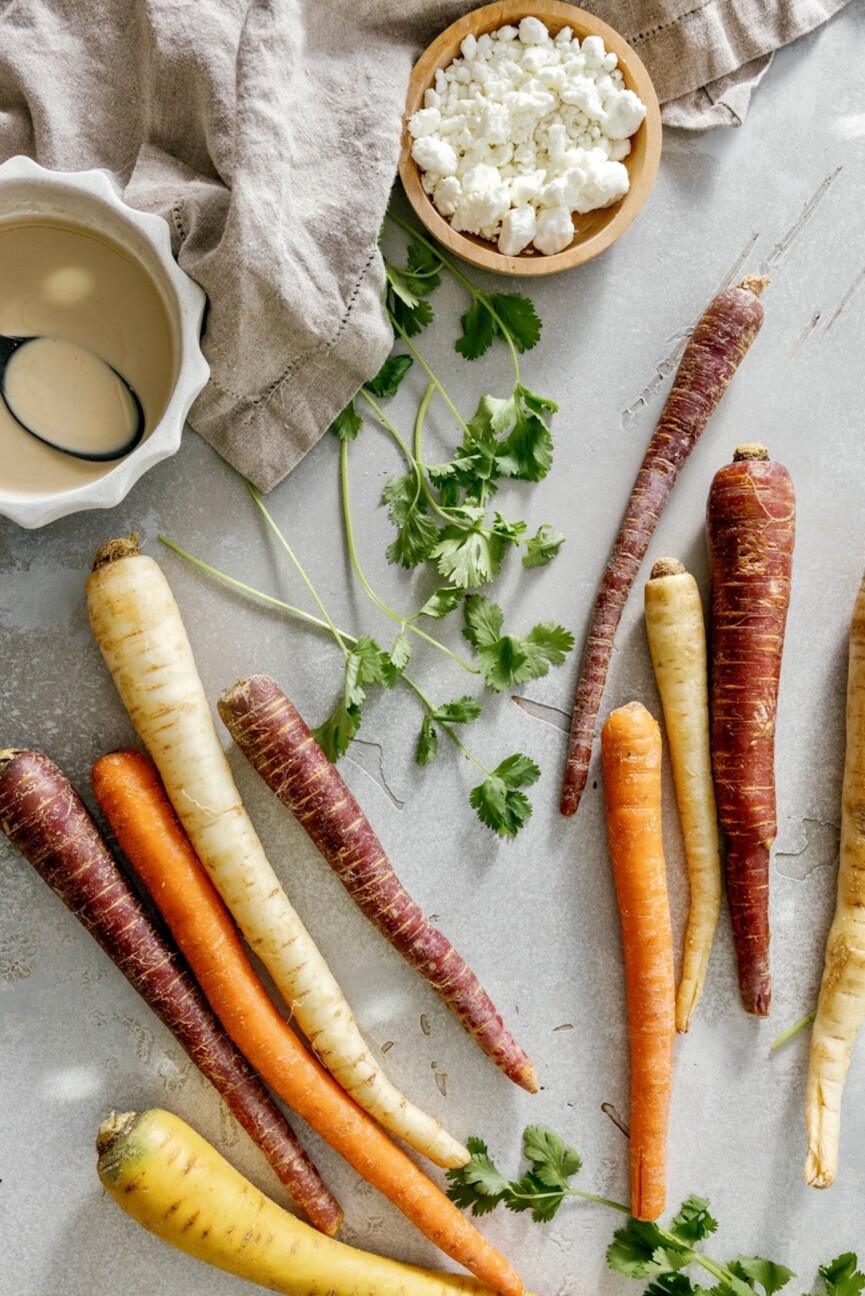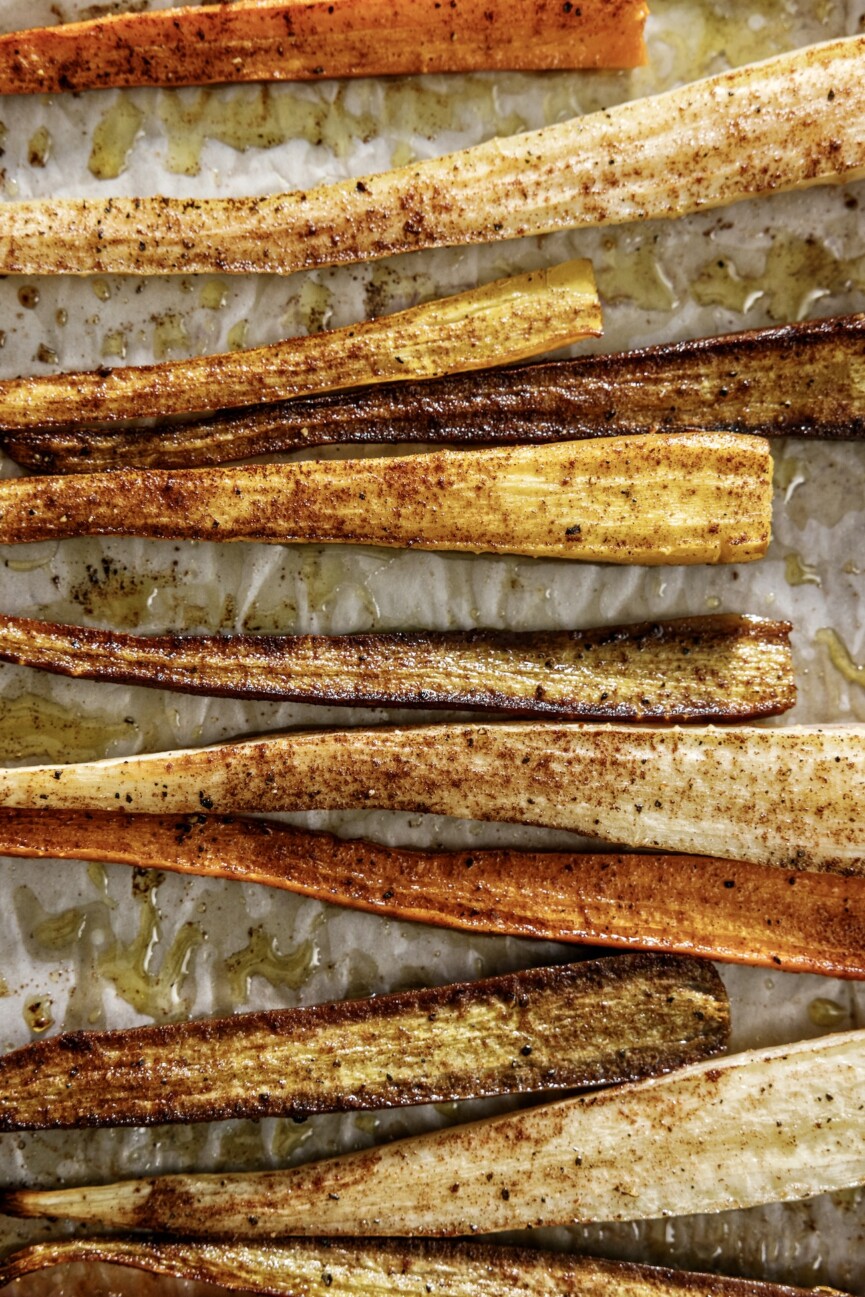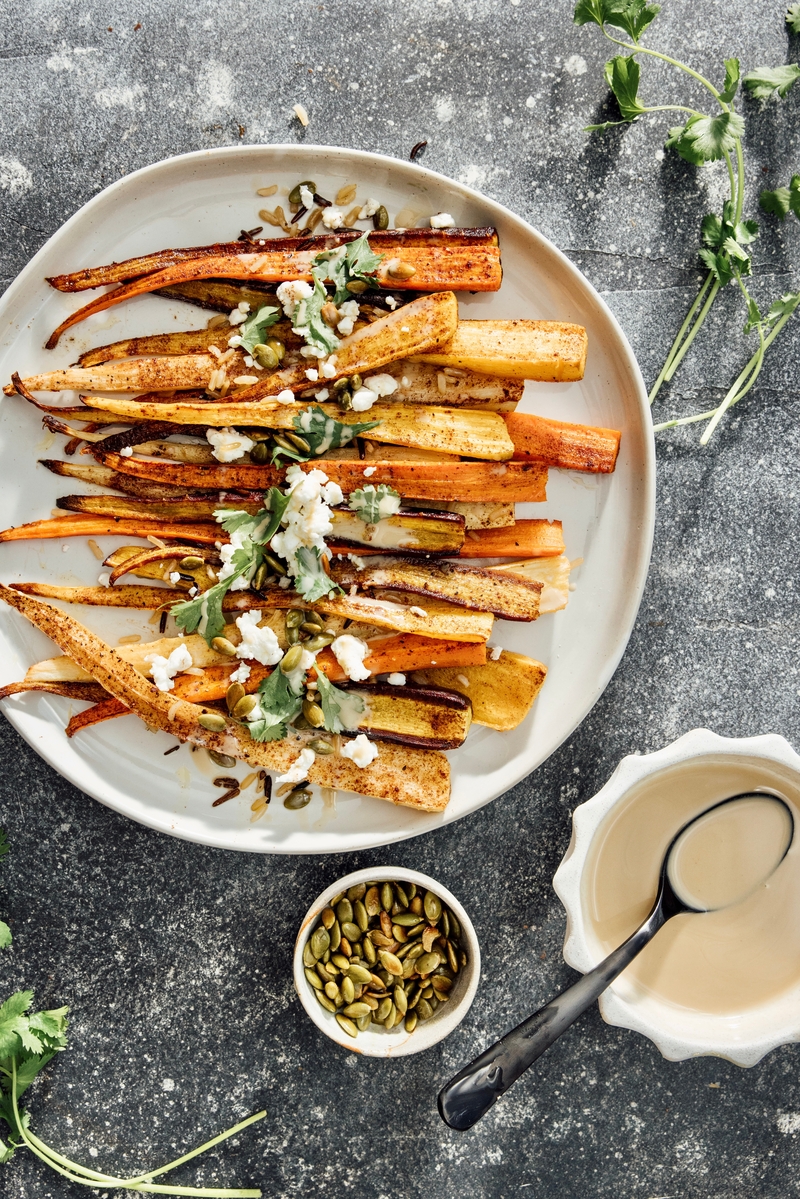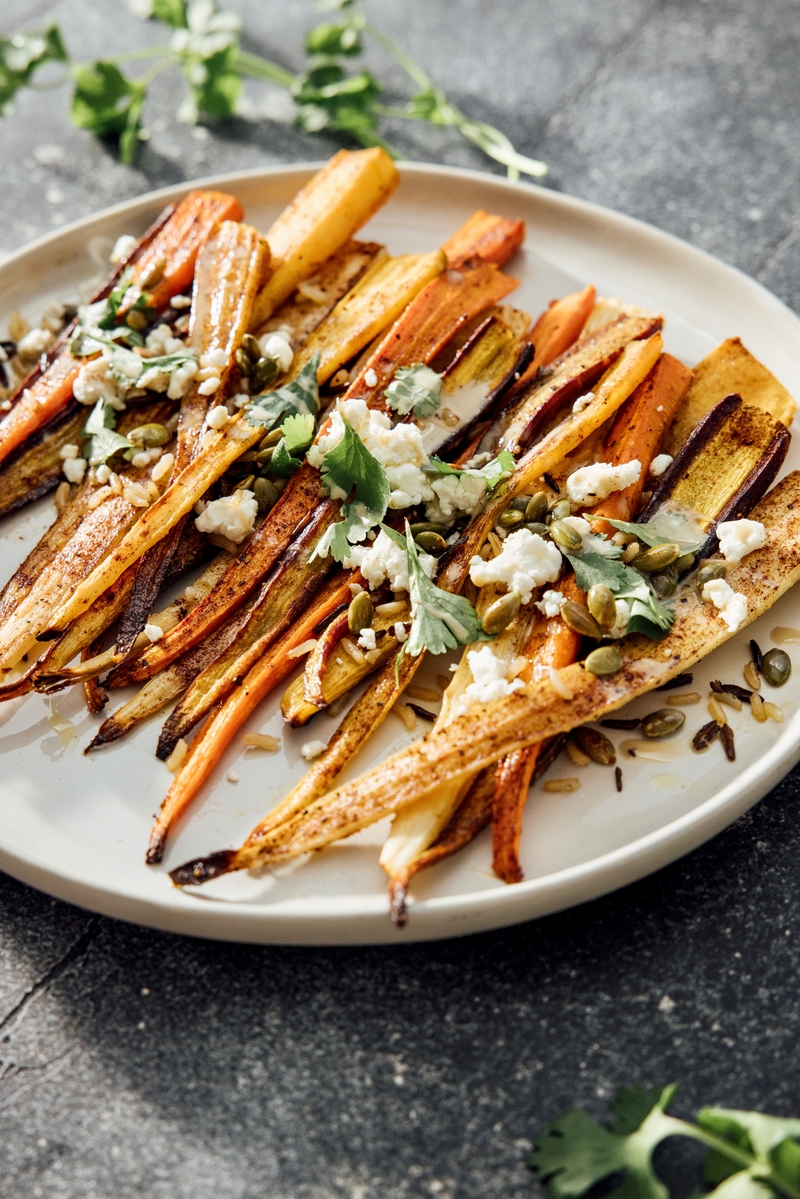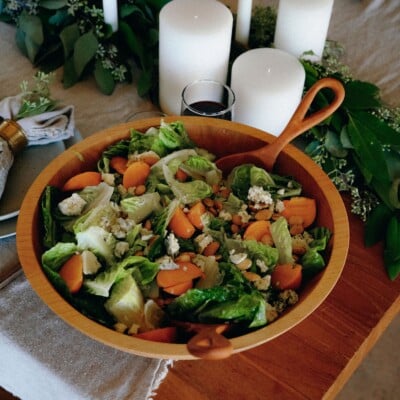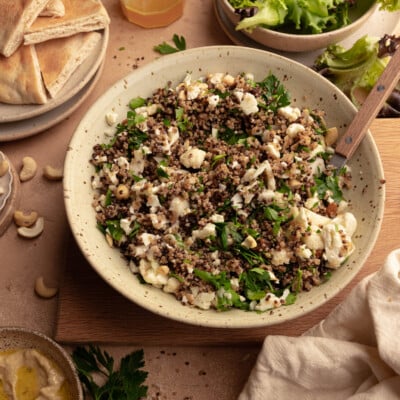If you come for dinner on a chilly autumn night, there will be a sheet of roasted vegetables on the table. They’re my love language. Even my toddler—an otherwise selective eater—gobbles them up. And so, it feels fitting to re-imagine the overcooked, lackluster veggie dish that inevitably graces your Thanksgiving dinner. Enter: roasted heirloom carrots with wild rice and tahini. These carrots (I promise!) deserve a seat at the table. A contrast of colors, textures, and flavors, this recipe for roasted Thanksgiving vegetables is the best of all worlds.
Highlighting seasonal and healthy ingredients—like hearty grains, caramelized carrots, toasted pepitas, and earthy tahini—there’s gratitude in every bite. Consider these roasted Thanksgiving vegetables your newest tradition.
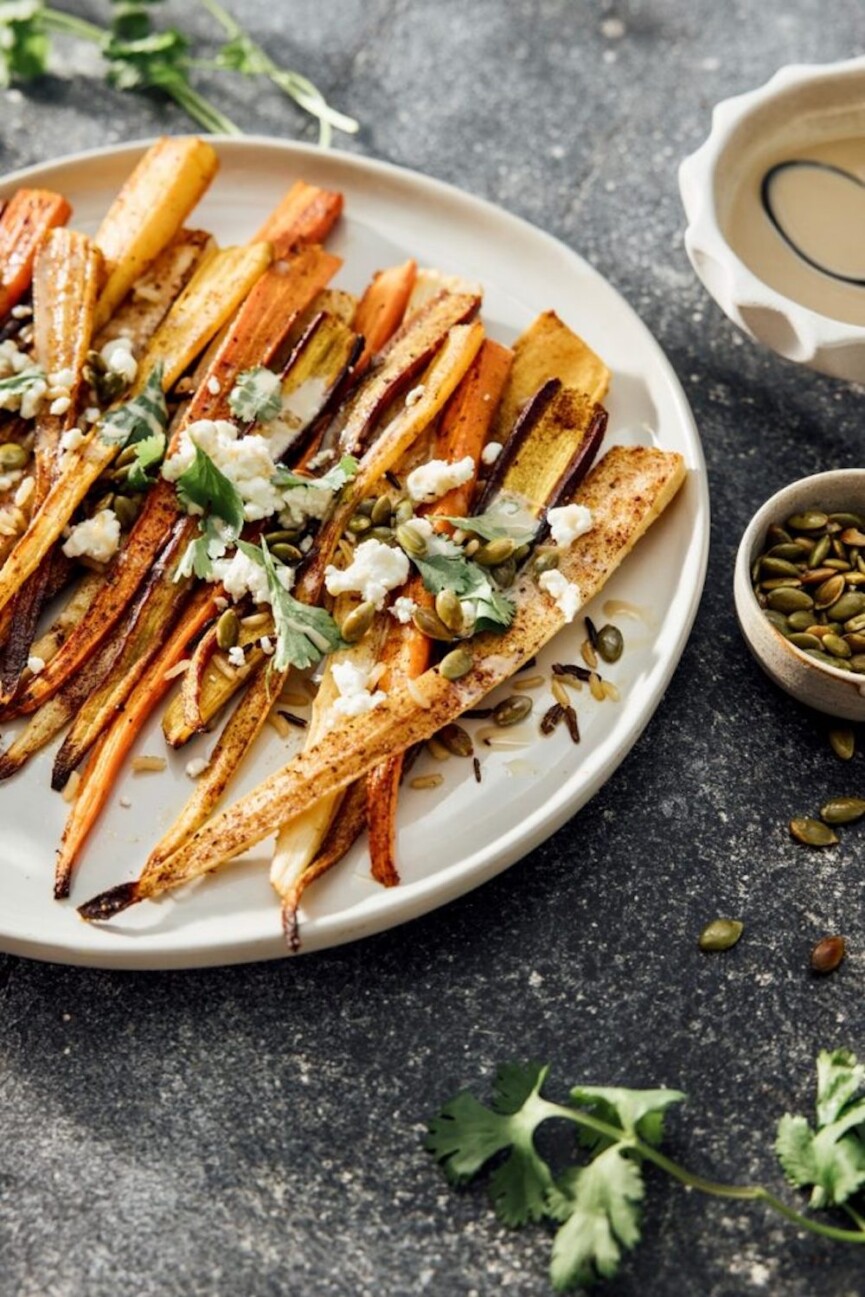

Tips For Making The Best Roasted Vegetables
When it comes to mastering root veggie season, we (humbly) know a thing or two. Whether you’re making crispy butternut squash, creamy vegan soup, or a classic fall harvest salad, we want you to incorporate the best tips and tricks.
- Pick root vegetables that feel heavy for their size and firm to the touch. Ideally, they have their stems (or greens) attached. If you’re not using your veggies right away, store them properly.
- Once it’s game time, wash and pat your veggies dry. Use a sharp knife to cut the vegetables into uniform pieces.
- When roasting, use a large-rimmed baking sheet. For easy clean up, line the baking sheet with non-toxic parchment paper. Toss the vegetables in high heat oil—you want them nicely coated. Don’t crowd the baking sheet. This is very important! If you crowd and overlap the vegetables, they’ll steam. Instead, for roasting purposes, we want them crispy.
- Roast vegetables at high heat—400 or 425 degrees Fahrenheit. Once they’re half-way done, give them a good flip. This ensures that the veggies cook evenly.
Crank the broiler for the last few minutes—an extra char is the pièce de résistance.
How To Store Roasted Vegetables
Once cooked and cooled, store them in the fridge. Place cooled vegetables in an airtight container. They’ll keep in the refrigerator for up to five days. You can either combine veggies or keep them in separate containers.
How To Reheat Roasted Vegetables
You have options! Reheat roasted veggies in the oven, in a skillet on the stovetop, air fryer, or microwave. If you’re reheating this heirloom carrot recipe, specifically, warm only the rice and carrots. I prefer reheating the rice in the microwave (with an ice cube!), and the carrots in the oven. Then, add the the tahini, pepitas, goat cheese, and cilantro.
Oven:
Preheat to 350 degrees Fahrenheit. Heat until warmed through, about 5-10 minutes.
Skillet:
In a skillet or cast iron, add a bit of olive oil and cook over medium heat. Stir occasionally. This should take 3-4 minutes.
Air Fryer:
If opting for the air fryer, you’ll get crispy veggies in a matter of minutes! Heat at 350 degrees Fahrenheit and don’t overcrowd the basket.
Microwave:
Last but not least, the microwave. If you don’t mind mushy roasted vegetables, they’ll reheat in 30-60 seconds.
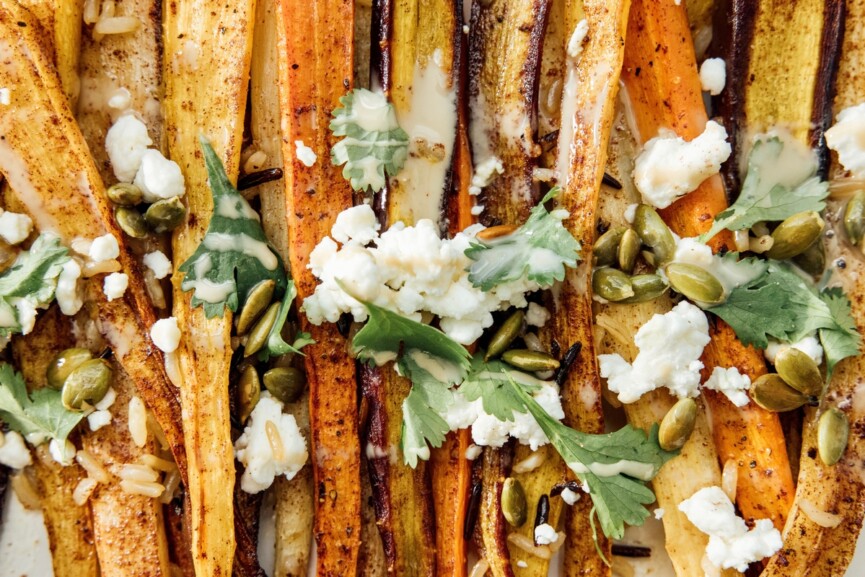
Is this Thanksgiving side dish healthy?
A resounding yes. When it comes to creating a nourishing Thanksgiving side dish, you want a mixture of flavor profiles (to satisfy palates), macronutrients (for balanced blood sugar!), and at least one fresh component (for vitamins and minerals). These roasted heirloom carrots with wild rice and tahini check all the boxes. This recipe contains slow-digesting carbs, healthy fats, fiber, and a bit of protein. It’s well-rounded without overshadowing your main Thanksgiving dish.
Ingredient Swaps
Wild rice is chewy yet sturdy, a wonderful base for this dish. However, you can sub brown rice or farro. Spiced with cinnamon, the heirloom carrots are sweet and warming without any added sugar. For an extra kick, add a pinch of cayenne. Can’t find heirloom carrots? Classic orange carrots will do. You can also sub the carrots for parsnips. The tahini sauce is bright yet earthy, a lovely contrast to the toasted pepitas. A generous layer of crumbled goat cheese adds tang, but you can sub the cheese for salty feta or shaved parm. Lastly, if you don’t like cilantro, swap it for parsley, chives, or mint.
How To Make This Dish Vegan
Either omit the cheese or sub it for your favorite plant-based variety! Otherwise, toss on crispy baked chickpeas in lieu of goat cheese. Keep in mind that this dish is vegetarian, nut-free, and gluten-free. However, if you sub the wild rice for farro or another grain, it will contain gluten.
What To Pair With Roasted Thanksgiving Vegetables
In need of a Thanksgiving menu? We have you covered.
For the main:
Sides that pair beautifully with these heirloom carrots:
There’s something to appease every palate!
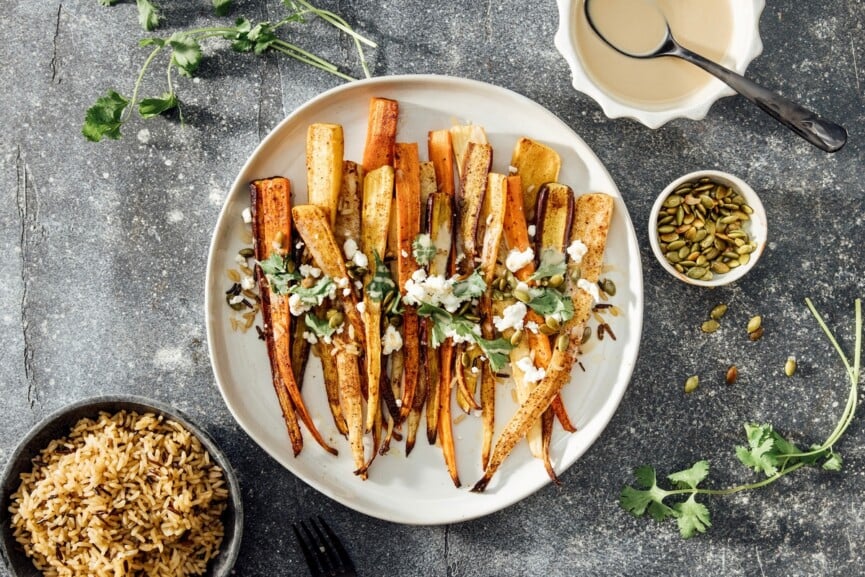
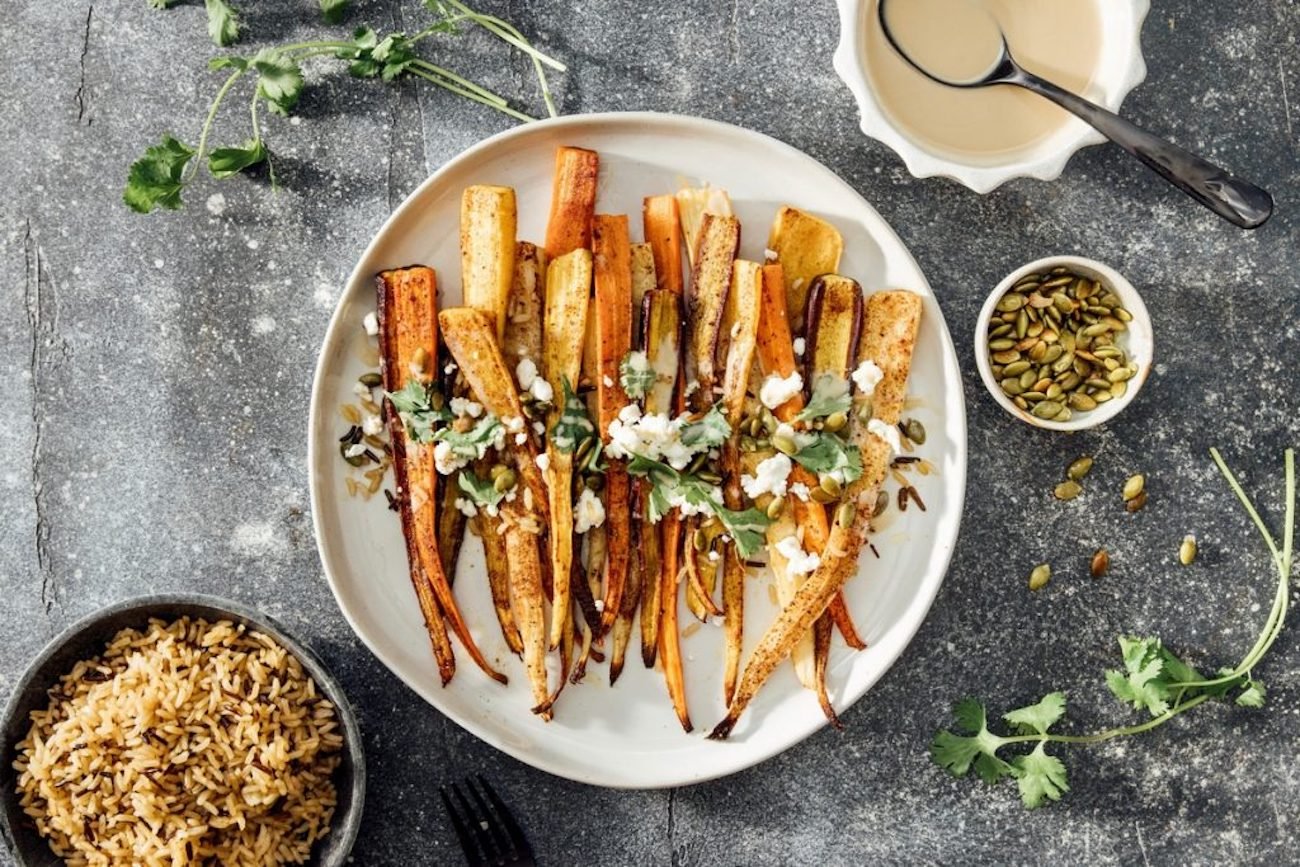
Simple Roasted Vegetables
Description
These heirloom roasted carrots are the perfect flavorful and satisfying side that’ll add some color to your Thanksgiving table.
Ingredients
- 1 cup wild rice
- 1 pound heirloom carrots
- 2 tablespoons olive oil (sub: avocado oil)
- 1 teaspoon ground cinnamon
- Sea salt and pepper, to taste
- 1/4 cup tahini
- 2 tablespoons chopped fresh cilantro
- 2 tablespoons lemon juice
- 4 tablespoons water
- Sea salt and pepper, to taste
- 3 tablespoons raw pumpkin seeds
- 1 teaspoon olive oil
- Pinch sea salt
- 1/2 cup crumbled goat cheese
Instructions
- Roast the carrots: Preheat oven to 425 F. Line a baking sheet with parchment paper and add carrots. Drizzle with olive oil and sprinkle with cinnamon, salt, and pepper. Roast for 25–30 minutes, or until the carrots are easily pierced with a fork.
- Cook the wild rice according to package.
- Make the tahini sauce: Add tahini, cilantro, water, lemon juice, sea salt, and pepper to a food processor. Blend until combined.
- Add pumpkin seeds to a small skillet over medium heat. Add olive oil and sea salt. Sauté until toasty and golden brown (1-2 minutes). Toss constantly.
- Assemble: Place roasted carrots on a serving platter. Layer the grains over the top. Drizzle with tahini sauce, toss on goat cheese, and sprinkle with pepitas.


